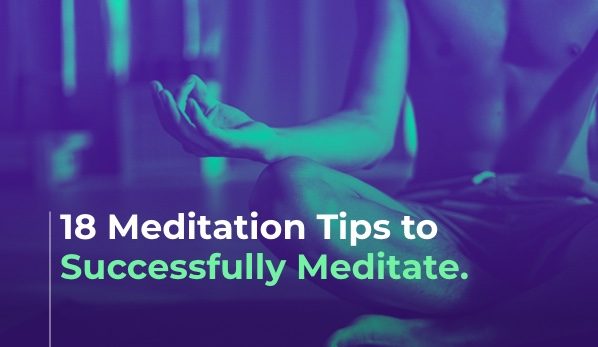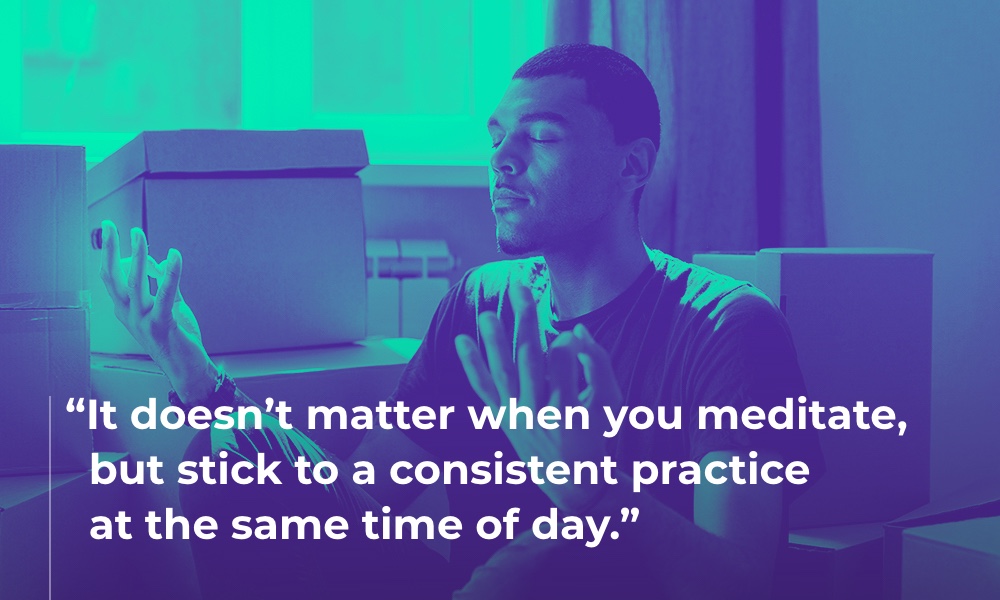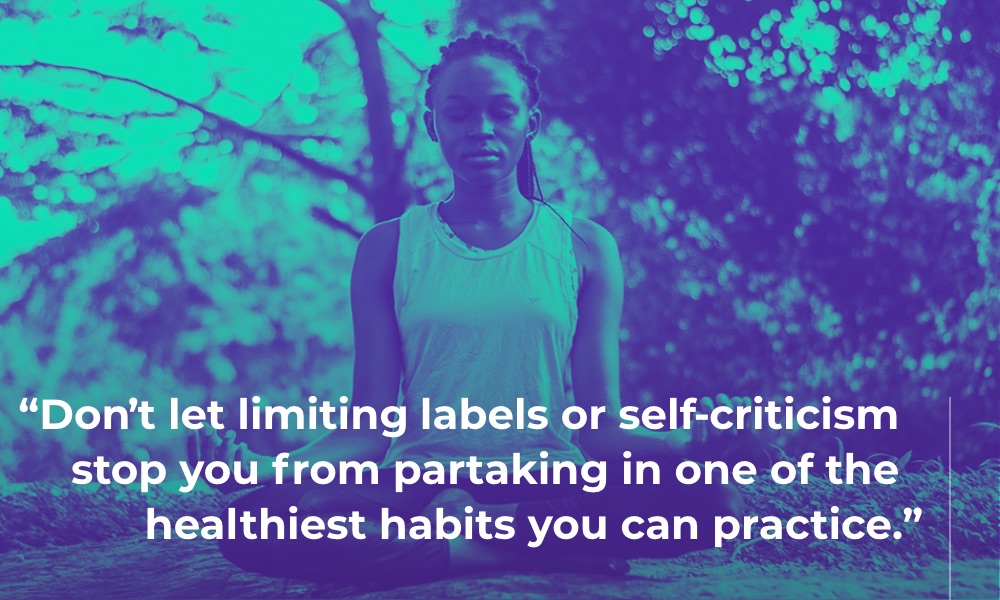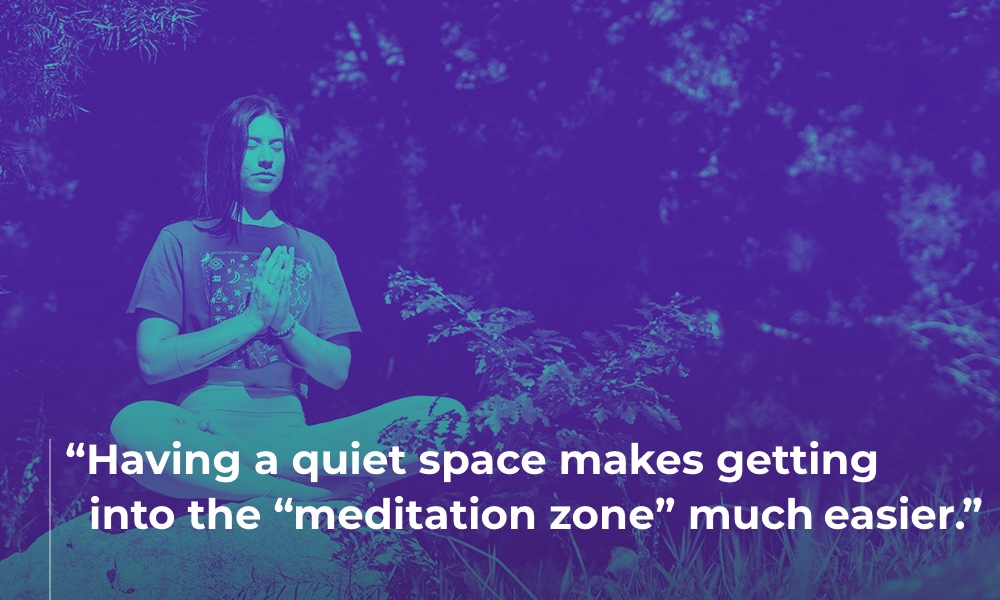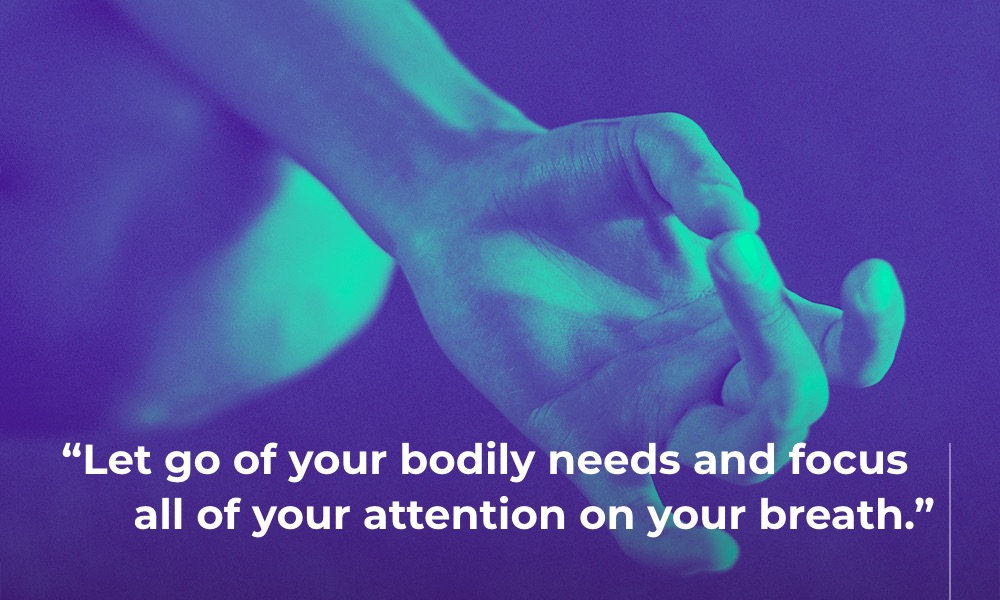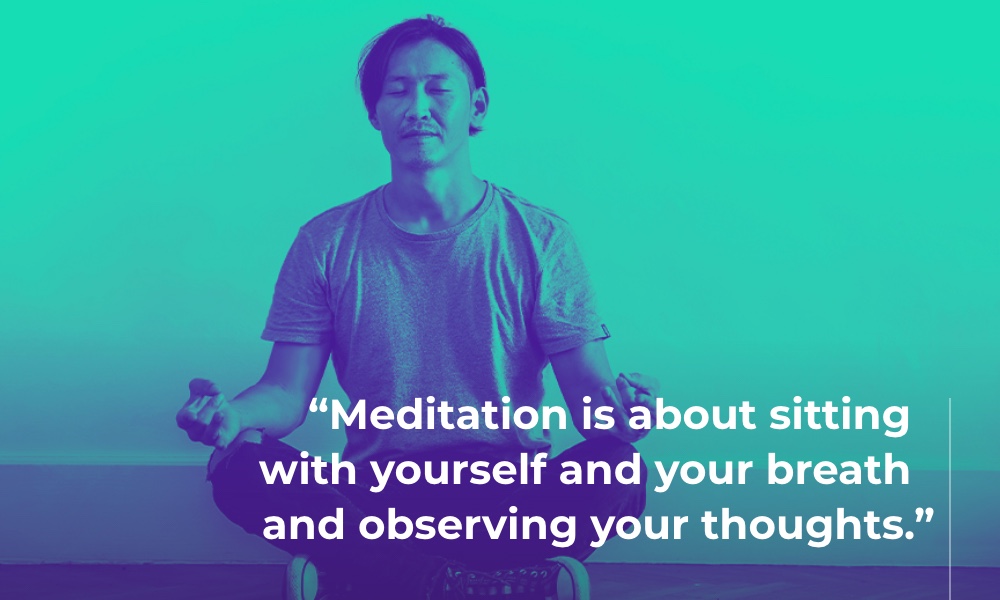At its core, mindfulness meditation (and most other types of meditation) are simple. After all, the only thing you need for a mindfulness meditation session is yourself! However, there are a few tricks you can use to have the best meditation experience possible, and we’re sharing our favorites today.
We’ve separated the following meditation tips into categories based on where you might be in your meditation journey. So no matter if you’re looking for meditation tips for beginners or if you’re seeking tips on how to keep advancing your practice, we’ve got you covered. Have a look through all of them—you never know what might benefit you.
How To Get The Most Out of Meditation
If you want tips on how to meditate properly, remember these principles.
1. Don’t Run Away From Your Emotions
There’s no way around it—meditation can lead you to experience emotions that you might not want to feel. However, this is a critical part of processing the events that happen in your daily life, and it’s the healthiest way to deal with them. To get the most out of your meditation practice, avoid running away from these emotions as they come up. You don’t need to engage with and ruminate over them, you just need to sit with them and let them move through you.
2. Be Consistent
Meditation is personal. You can meditate any way at any time. But no matter how you choose to do it, just be consistent. A morning meditation can help put you in the right headspace for the upcoming day. An evening meditation can help you wind down from the day you had. It doesn’t matter when you meditate, but stick to a consistent practice at the same time of day.
3. Apply What You Learn to the “Real World”
Meditation is a mindfulness practice. It teaches you to be conscious, live in the present moment, and be self-aware. These skills apply to every single part of your life—not just your time on the meditation cushion. Remember to take what you’ve learned and apply it to each day to see the most benefits.
Meditation Tips for Beginners
If you are brand new to meditating, start with these tips on meditation for beginners:
1. Start With a Shorter Meditation Time
When you’re meditating, there’s nobody you need to impress. So don’t try to go for the longest meditation session just to say you did it. A longer session doesn’t necessarily lead to better results, especially when you’re first getting started. In fact, it can lead to frustration if you’re not prepared for it. By doing just a few minutes of meditation each day, you’ll begin to experience the benefits of meditation. That’s why we recommend starting with a 5-minute meditation session. Then build up from there as needed.
2. Limit Your Movement During a Meditation Session
We know—as soon as you begin to sit still, that’s when your nose starts to itch! But as tempting as it can be to scoot around, reposition yourself, scratch an itch, or get a stretch in, try your best to stay still. Challenge yourself to breathe through the urge to move around. This helps you stay focused on your practice.
3. Keep an Open Mind
Many people don’t try meditation simply because they don’t think they’re the type of person who meditates. But just like creating any art makes you an artist, simply meditating makes you a meditator—end of story! Don’t let limiting labels or self-criticism stop you from partaking in one of the healthiest habits you can practice.
4. Try a Whole New Way to Meditate
Let’s face it, meditation is difficult. While the benefits of meditation are enormous, sitting still and “doing nothing” for up to an hour is a challenging habit to keep long term.
While guided meditation apps have made it easier to create a meditation routine, we know that it’s not something most stick with long term.
What if there was an easier way? What if there was a way to get those same benefits of meditation in a way that engaged your mind and left you feeling focused and energized?
Primed Mind is meditation taken to a whole new level. Combining mindfulness, visualization, and hypnosis techniques, we’ve created audio “Primers” that offer the same benefits of a guided meditation app, and so much more.
If you’re new to mediation, or you’ve tried to build a meditation habit previously and it hasn’t stuck, check out Primed Mind.
Meditation Suggestions for Your Best Practice
It’s important to know that as long as you’re taking the time to sit with your breath, you’re meditating just fine. Don’t let the fear of not meditating “perfectly” stop you from doing it in the first place. However, if you’d like some tips on meditating to make your practice even better, these are some tried and true ones we can recommend.
1. Set Aside Time To Meditate Daily
Set a specific time of day to meditate each day, and block off that time on your calendar. You’re a lot more likely to maintain a
regular meditation practice if it’s already built into your daily schedule. You may even begin to feel calmer when that time rolls around each day. This can happen because your body is so used to getting some peace with your breath at that time.
2. Create a Specific Meditation Location
Just like having a specific time to meditate can help you keep up your practice, so too can having a specific place to do it. You don’t need to have an entire room dedicated to this.
A corner of your bedroom or office is just fine. Keep this area clean and clutter-free. We also recommend keeping an inviting chair or pillow there, so you don’t have to worry about setting up anything before you begin.
3. Ask Those Around You To Remain Quiet
Especially if you’re meditating at home around family members, it’s perfectly acceptable to ask them to keep their volume low for 5-20 minutes. And again, if you meditate at the same time each day, whoever is around you will get in the habit of being quiet during this time. Who knows—they might even start meditating, too! Either way, having a quiet space makes getting into the “meditation zone” much easier.
4. Eliminate Distractions
This is not the time for push notifications. Silence or turn off your phone, computer, or anything else that may distract you from your session. (The only exception here is if you’re using a guided meditation app.) Don’t worry; it will all be still there when your session is complete.
5. Use Proper Meditation Posture
Good posture is one of the most important meditation techniques. Although this may seem like nit-picking, meditation posture is incredibly important. It helps you stay comfortable in your position and avoid fidgeting, so you can direct all of your energy to your practice. Check out our meditation posture guide to learn more about meditation posture.
6. Avoid Attaching Expectations to Your Meditation
It’s true that meditation has tons of benefits. But avoid going into a meditation session with expectations. When you expect your anxiety to lessen, your anger to minimize, or your focus to improve, you’ve missed the point. If you’re focusing on your expectations for your meditation session, you’re not really meditating at all. The only way to reap the benefits of meditation is to let go of expectations and just sit with your breath.
7. Ensure You’re Comfortable and Hydrated Before You Begin a Session
Most people know that they should stretch and drink water before working out, but what about before meditating? Meditation may not be as physically exhausting as, say, going for a run. Still, there’s no doubt that it’s taxing, both mentally and physically.
So, of course, it makes sense to get any kinks out of your muscles and have a glass of water before you begin. That way, you can let go of your bodily needs and focus all of your attention on your breath.
8. Remember What Meditation Is Not
Remember that the goal of meditation is not to empty your brain of thoughts. And you’re not always going to automatically feel good after every session. Often, meditation means sitting with difficult emotions, and sessions won’t always end with everything feeling cheerful and resolved. You will, however, have truly processed your emotions, which is far better for your physical and mental health and well-being in the long run.
9. Use Your Natural Breath
Many meditators begin their meditation practice by taking a deep breath or two. This is totally fine and encouraged! But after a few moments, remember to return to your normal breathing pattern. (That is, unless you’re doing a type of meditation that requires a special breathing technique.) When you focus all of your attention on your breath, it can be surprisingly challenging to breathe normally. But that’s okay because the point of meditation is to sit and observe your breath. When you notice that it’s difficult to breathe normally, you’re observing your breath, and thus, you’re meditating.
10. Find the Best Meditation Pose for You
If you don’t like sitting to meditate, that’s okay! There are lots of different meditation postures for you to try. You can try a moving meditation, a standing meditation, or you can even lie down to meditate. Experiment to see what your body prefers and stick with that.
11. Don’t Be Hard on Yourself
Meditation is about sitting with yourself and your breath and observing your thoughts. It’s normal when your mind wanders. You will have distracting thoughts pop up when you’re trying to meditate. So does everyone else who has ever meditated, so don’t be too hard on yourself! Meditation takes a lifetime to master. Learning to accept your “monkey brain” is part of the meditation process—in fact, it’s the entire point!
How To Get Better at Meditation
If you’re a regular meditator and you’re looking for tips on how to improve your meditation sessions, look no further. The following are a few tips for the seasoned meditator.
1. Stick With One Form of Meditation Long Enough to See Results
You may or may not know that there are actually dozens of different types of meditation practices you can try. This means there are a lot of opportunities to explore your consciousness in different ways, and you should take advantage of them! However, it’s important not to switch up your meditation style too often. It takes a while to truly understand and sink into each practice, let alone reap its benefits. That’s why we recommend sticking with one type of meditation practice for a while before you move on to another.
2. Try Journaling About Your Experience
Some people find that they feel or think a certain way after meditating, and they want to remember it. Try keeping a small, inviting notebook in your meditation space, and write down anything you feel compelled to record after each session.
Alternatively, you can try free-writing whatever comes to mind before your session begins so that your mind feels clearer for your meditation session.
3. Don’t Skip a Session Just Because You Don’t Feel Like Sitting
Sometimes when you’re feeling hyper, anxious, angry, restless, annoyed, or any other frazzling emotion, it can be tempting to skip your meditation session for the day. But try not to; meditating will help you process these emotions! And if you really can’t imagine sitting with yourself for a few minutes, try a different meditation type.
There are many forms of meditation, and not all of them involve sitting still. For example, you can try a walking meditation where you go for a walk and direct all of your attention to the sensations of movement in your body and breath.
Using Primed Mind for Guided Meditation at Home
Meditation is one of the healthiest ways to practice self-care. Not only does meditation let you check in on mental and emotional state, but it also lowers your blood pressure and stress levels.
Like all good things in life, meditation takes some work. Being present with your body and breath is not easy, and it’s totally normal to catch your mind wandering. That’s all okay—the whole point of the practice is to accept exactly where you are on your journey.
However, if you want to make your meditation practice more enjoyable and successful, there are some things you can do. Try choosing a good position, staying consistent with your meditation time, and using a meditation app that helps you get the best results.
Primed Mind combines meditation, visualization, hypnosis and mindset coaching techniques, all within a mobile app so you can reap the benefits of meditation with the touch of a button. Try our 4-minute session on breath and relaxation, and start incorporating Primed Mind into your wellness routine today!

